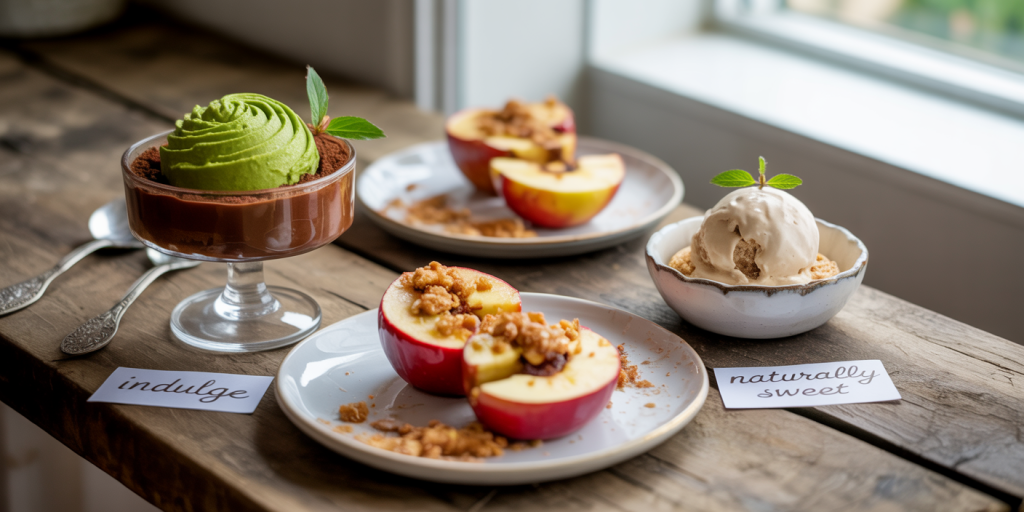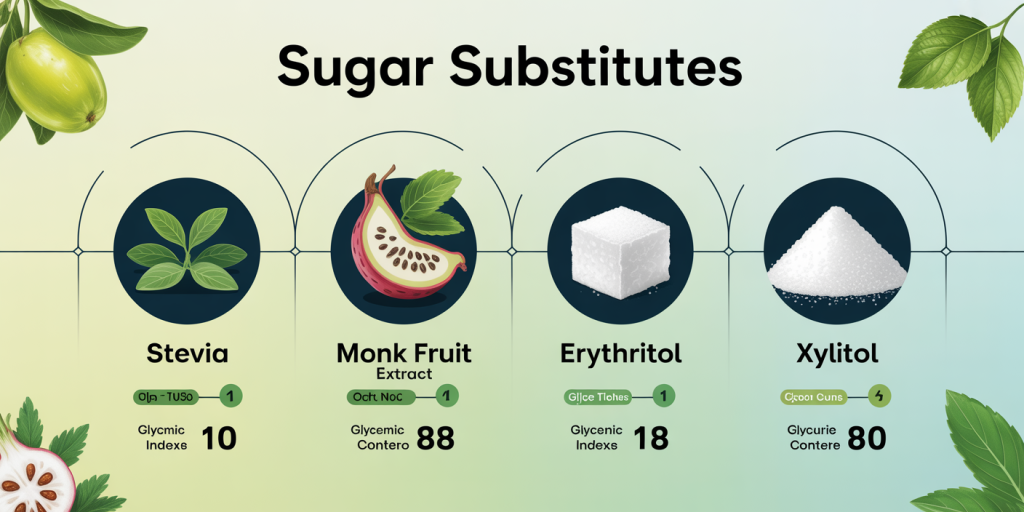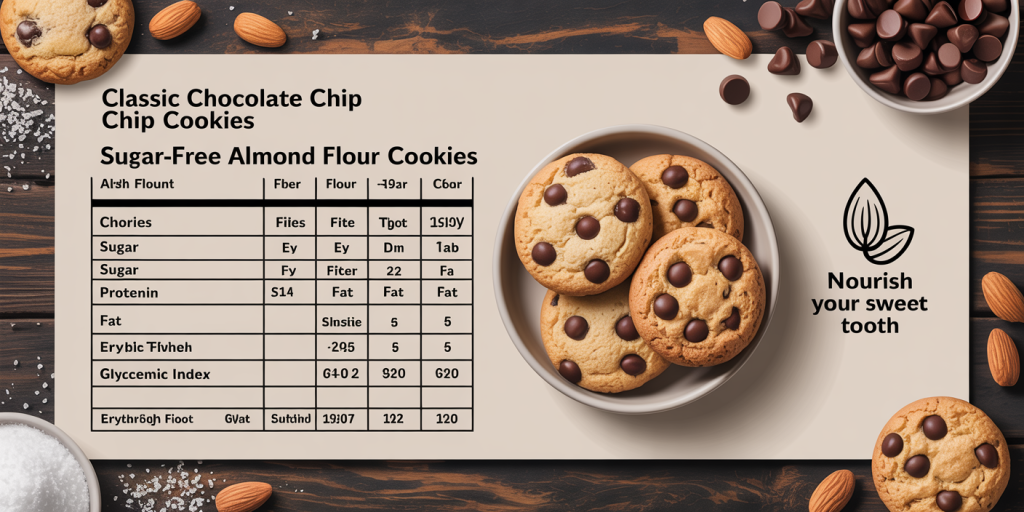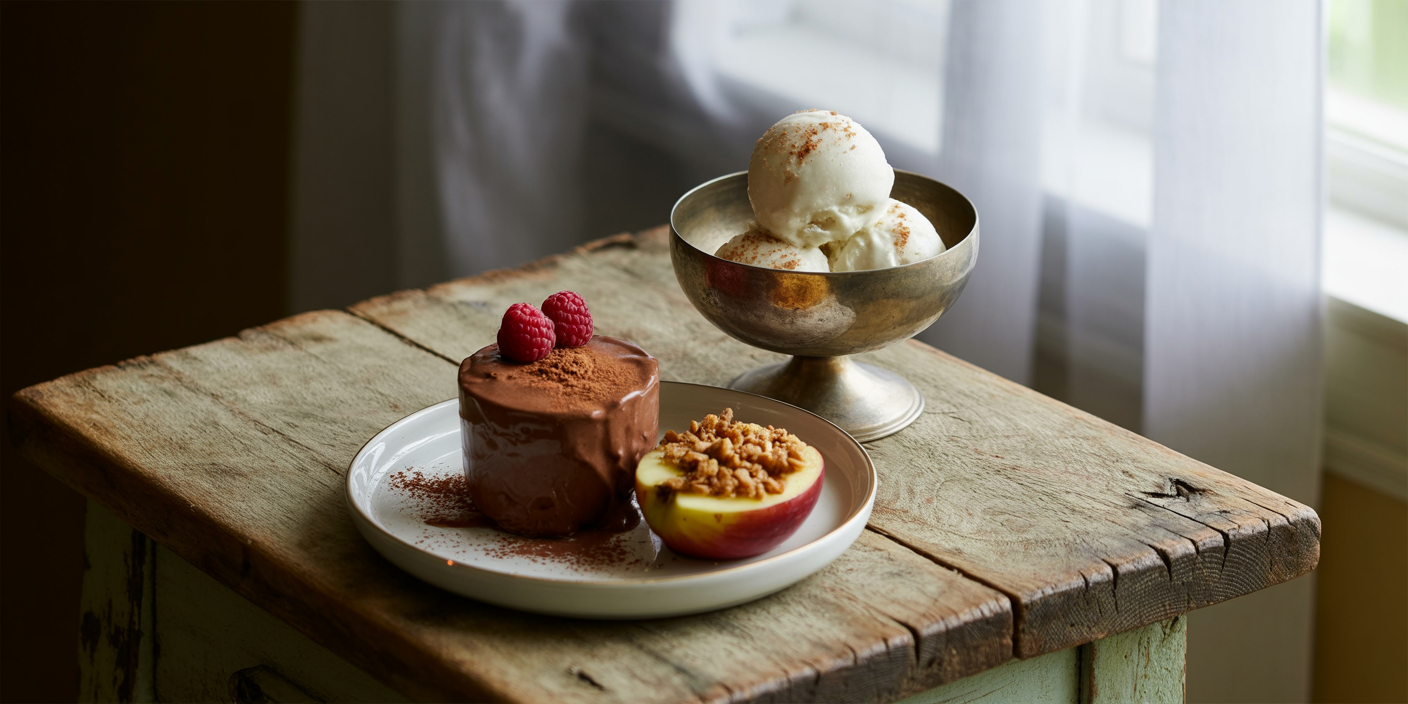In today’s health-conscious society, the pursuit of sugar-free alternatives has become more prevalent than ever. Sugar-free desserts offer a way to indulge in sweet treats while managing blood sugar levels, reducing calorie intake, or simply embracing healthier eating habits. Contrary to the common belief that sugar-free means flavorless or unsatisfying, the world of sugar-free desserts is surprisingly diverse and tastefully rich. This article explores a variety of surprising sugar-free dessert options that are both delicious and nutritious, supported by data, practical examples, and detailed comparisons.
The Rising Popularity of Sugar-Free Desserts
The global sugar-free products market was valued at approximately $12.8 billion in 2023, indicating a rising consumer demand for healthier food options (Grand View Research, 2023). This trend is fueled by greater awareness about the negative effects of excessive sugar consumption, such as obesity, diabetes, and cardiovascular diseases. For instance, the American Heart Association recommends limiting added sugar intake to no more than 25 grams per day for women and 36 grams for men, yet many individuals exceed this limit daily.
Sugar-free desserts provide a practical solution enabling people to enjoy sweets without the associated health risks. These desserts often utilize natural sweeteners, sugar alcohols, or no sweeteners at all, relying instead on ingredient-rich bases like nuts, fruits, or dairy substitutes. This shift from chemically enhanced sugary treats to natural alternatives reflects evolving consumer preferences toward wellness and sustainability.
Decoding Sugar-Free: What Does It Really Mean?
Understanding what constitutes a sugar-free dessert is essential. Sugar-free generally means that the product contains no added sugar or less than 0.5 grams of sugar per serving according to the Food and Drug Administration (FDA) guidelines. However, “sugar-free” does not inherently mean carbohydrate-free or calorie-free. Many sugar-free desserts still contain natural sugars from fruits or milk but exclude refined sugars.
A review of sugar substitutes used in desserts is instructive. Common natural substitutes include stevia, monk fruit extract, erythritol, and xylitol. Each has a distinct glycemic index, sweetness level, and potential side effects. For example, erythritol has nearly zero calories and a glycemic index of zero, making it an excellent option for diabetics.

| Sweetener | Source | Glycemic Index | Calories per gram | Notes |
|---|---|---|---|---|
| Stevia | Stevia plant | 0 | 0 | Natural, zero-calorie |
| Monk Fruit | Monk fruit | 0 | 0 | Natural, antioxidative properties |
| Erythritol | Fermented carbs | 0 | 0.24 | Sugar alcohol; may cause bloating |
| Xylitol | Birch trees | 7 | 2.4 | Sugar alcohol; toxic to pets |
This table helps consumers make informed choices when selecting sugar-free desserts based on taste preferences and health considerations.
Innovative Sugar-Free Desserts That Impress
Many chefs and home cooks alike are challenging the stereotype that sugar-free desserts are bland. Creative recipes using wholesome ingredients can yield treats that are satisfying and innovative. For example, avocado chocolate mousse is a popular sugar-free dessert where ripe avocado provides creamy texture and natural sweetness, combined with unsweetened cocoa powder and stevia.

Another example is baked cinnamon apples with a nut crumble topping, using fresh apples to provide natural sweetness without any added sugar. Such recipes capitalize on the natural sugar content in fruits and the rich flavor of spices to create depth and complexity.
A real-case study by the Culinary Institute of America (CIA) showcased that 85% of participants preferred sugar-free desserts featuring natural sweeteners and fresh ingredients over traditional sugar-laden desserts in blind taste tests. This indicates a shift in consumer palate acceptance.
In addition, sugar-free frozen desserts such as coconut milk-based ice creams sweetened with erythritol and flavored with vanilla beans have become bestsellers in specialty food stores. These desserts combine a creamy mouthfeel with no compromise on taste or indulgence.
Comparing Nutritional Profiles: Sugar-Free vs. Traditional Desserts
A critical aspect of sugar-free desserts is their nutritional impact compared to traditional sugar-containing counterparts. Let’s consider a popular dessert: chocolate chip cookies. Traditional cookies often contain around 15-20 grams of added sugar per serving and 150-200 calories.

The sugar-free variant, replacing sugar with erythritol and using almond flour instead of refined flour, contains about 1 gram of net sugar and approximately 120 calories per cookie. Moreover, almond flour adds protein and healthy fats, improving the overall nutrient density.
| Nutrient | Traditional Cookie (per 1 cookie) | Sugar-Free Cookie (per 1 cookie) |
|---|---|---|
| Calories | 180 | 120 |
| Total Sugars (g) | 18 | 1 |
| Protein (g) | 2 | 5 |
| Total Fat (g) | 8 | 9 |
| Fiber (g) | 1 | 4 |
| Glycemic Index | ~70 | ~20 |
This comparative table demonstrates the healthier profile sugar-free desserts can offer without sacrificing texture or enjoyment. Lower glycemic index also means fewer blood sugar spikes.
Practical Tips for Making Sugar-Free Desserts at Home
Transitioning to sugar-free baking or dessert preparation at home can appear daunting but is manageable with practical strategies. First, understanding the role of sugar in recipes is crucial: sugar mainly provides sweetness, but also moisture, texture, and browning. Thus, replacements should aim to mimic these functions.
Natural fruit purees, such as mashed bananas or date paste, offer both sweetness and moisture. For example, swapping one cup of sugar with ¾ cup of mashed banana can provide sweetness and maintain crumb softness in muffins. Additionally, spices like cinnamon, nutmeg, and vanilla enhance perceived sweetness without adding sugars.
Selecting appropriate sugar substitutes is important; erythritol blends well with other sweeteners to avoid aftertaste, while stevia should be used sparingly due to its potent sweetness. Recipes may require trial and error to get the balance right, especially in delicate pastries.
Hydration and baking times might need adjustment since sugar-free versions may dry out faster. Adding ingredients like Greek yogurt or applesauce can offset this. Furthermore, using nuts, seeds, and dark chocolate (85% cocoa or higher, sugar-free varieties) adds richness and texture.
The Future of Sugar-Free Desserts: Trends and Innovations
Looking ahead, advances in food technology and increasing public demand suggest exciting developments in sugar-free desserts. One burgeoning area is the use of biotechnology to produce natural sweeteners with enhanced flavor profiles and health benefits. For example, companies are working on fermented stevia variants that reduce bitterness and improve mouthfeel.
Personalization of desserts through AI-driven nutritional analysis is also on the rise. Imagine customized sugar-free dessert formulations tailored to one’s metabolic profile, dietary restrictions, and taste preferences. This can revolutionize how desserts fit into individual health plans.
Furthermore, the focus on sustainability complements the sugar-free movement. Using locally sourced fruits, natural sweeteners, and minimizing processing aligns with eco-conscious consumer values. Zero-waste dessert recipes that use every part of an ingredient, such as carrot tops pesto paired with carrot cake bases, are gaining traction.
Market data supports these future trends; the sugar substitute segment is expected to grow at a CAGR of 6.5% through 2030 (Statista, 2024), indicating sustained innovation and adoption.
In conclusion, sugar-free desserts are no longer a niche health product but an evolving, flavorful category ripe with possibilities. By embracing natural ingredients, culinary creativity, and technological advances, sugar-free desserts offer a surprisingly rich world of indulgence without compromising health. Whether baking at home or choosing store-bought options, consumers have diverse and delicious ways to satisfy sweet cravings while aligning with modern wellness goals.

Deixe um comentário